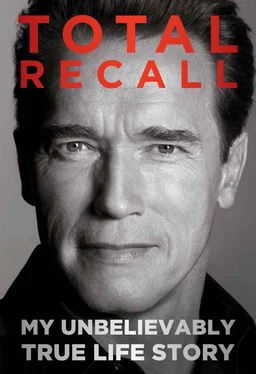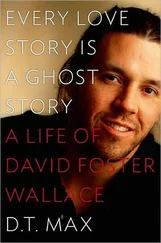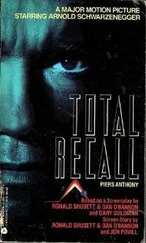So I said, “We can have a good relationship, but I need your help. As you know, for every dollar of taxes we pay, we are getting only seventy-nine cents back. I want to get more money back for the state of California because we are having problems.”
“Well, I don’t have any money either,” the president said. But we had a good dialogue in which he promised to find ways to be helpful, especially on infrastructure programs.
Three weeks later, I was back in Sacramento, on the same steps of the capitol where I’d raised the broom, being sworn in as the thirty-eighth governor of the state. Vanessa Williams, my costar in Eraser , sang “The Star-Spangled Banner” at the swearing in. Maria held an antique leather-bound Bible on which I put my hand as I took the oath.
In my speech, I reflected on the lessons I’d learned studying to become a citizen: how sovereignty rests with the people, not with the government, and how the United States emerged in a time of turmoil by a coming together of contending factions. That had been called the miracle of Philadelphia, I said, and “now the members of the legislature and I must bring about the miracle of Sacramento. A miracle based on cooperation, good will, new ideas, and devotion to the long-term good of California.” Emphasizing that I was a newcomer, I said that I would need a lot of help. But I let the crowd see how eager I was for this giant challenge. I wanted our state to be a beacon for the world just as it had been for an immigrant like me. The crowd cheered, and a choir sang songs from The Sound of Music as the congratulations began. Gray Davis, who had conceded very graciously, and his three predecessors, George Deukmejian, Jerry Brown, and Pete Wilson, all had come to see me sworn in. They drew me off to the side as we headed toward a reception. They were in a jovial mood.
“Enjoy this day,” said Deukmejian, the oldest of the three. “There is only one other day when you will feel this good.”
“When is that?”
“The day you leave.” The others smiled and nodded. Seeing I was skeptical, they started to explain. “Soon you’re going to be attending funerals of firefighters and law enforcement officers, and you’ll have tears in your eyes. You’ll be devastated that you have to shake the hand of some three-year-old who just lost his dad,” they told me. “And then you will be stuck here in Sacramento for three months every summer not being able to go on vacation with your kids, because those assholes in the legislature won’t pass a budget. You will be sitting here with frustration and anger.”
They bopped me on the shoulder and said, “So have a good time! Let’s go have a drink.”
CHAPTER 25
The Governator
I WAS THE SECONDperson in American history to be elected governor in a recall election, and I came into office after the shortest election campaign in the modern history of California. My transition period was three weeks shorter than a normal transfer of power between governors. I took office, with no previous experience as an elected official, at a time of crisis, with the state facing massive budget deficits and an economic slump.
I’d been a student of politics for a long time, and I’d done my homework at Schwarzenegger University, but there’s only so much you can absorb by cramming, even if it’s twelve hours a day. I wasn’t familiar with the cast of characters in Sacramento: not only the lawmakers themselves but also the thousands of lobbyists, policy experts, and influence peddlers who do much of the work—and write much of the legislation.
I didn’t even know most of my own staff. Everyone wanted to meet with me, but still, it was hard to hire people so quickly. Our scramble was especially tight: we had just five weeks after the election to fill the 180 staff positions in the governor’s office, including 40 or so high-level ones. Our pool was small because few political professionals had expected me to win, and some of the best candidates had already found new jobs after the 2002 election. I tried to hit the ground running, by looking for people with experience in California politics, Republicans or Democrats. But few of those political veterans had experience with me, and even those who had worked on my campaign had known me for only a few months.
We ended up drawing heavily on veterans of the Pete Wilson administration. For my chief of staff, I brought in Patricia Clarey, who had been Governor Wilson’s deputy chief of staff. She was an organized, hard-driving fiscal conservative who had gone to the John F. Kennedy School of Government at Harvard, and had worked in the insurance and oil industries. Rob Stutzman, my communications director, was another tough Wilson veteran who had been through a thousand fights.
I did bring with me a handful of key aides who’d known me for years: Bonnie Reiss, my right-hand person in the after-school movement; David Crane, the San Francisco financier who was my closest advisor on economics and finance; and Terry Tamminen, an environmental innovator whom I chose to head California’s Environmental Protection Agency. They were Democrats, but that didn’t matter—at least not to me. When Republican Party stalwarts objected, I explained respectfully that I wanted the best, regardless of their party affiliation, if they shared my vision in a particular area. These new appointees were all smart, thoughtful, open-minded people, but, like me, they didn’t know Sacramento or its strange ways.
The only way to understand Sacramento, we learned, was to throw away your civics books. It didn’t help to know how Washington works or how other state capitals work, because Sacramento runs by completely different principles. Common sense is not one of them. Nothing adds up.
For example, the biggest single thing Sacramento does is allocate money for K–14 education. Because of Proposition 98, passed by the voters in 1988, K–14 education claims nearly half the state budget. This doesn’t count the money for building schools or for funding the pensions of retired teachers or the billions of dollars from the state lottery dedicated to education. Prop 98, the Classroom Instructional Improvement and Accountability Act, ensures that education funding increases every year regardless of whether or not the state takes in more money. The formula that governs this is so arcane that only the guy who wrote it knows exactly how it works. His name is John Mockler. He likes to joke that he wrote it that way on purpose and put his kid through Stanford advising people about the formula. The nonpartisan Legislative Analyst’s Office had to produce a twenty-minute video explaining to state lawmakers how the law works, and even it needed to hire Mockler for advice.
Multiply the education funding formula a thousand times, and you get a picture of the absurdity of Sacramento. Its full-time legislature passes so many new laws each year—more than a thousand—that legislators don’t have time to even read the bills before they vote on most of them. Voters get so frustrated that they pass major legislation by initiative, like Prop 98, to force Sacramento to focus on real problems like education funding. Absurd.
Sacramento grew up as a boomtown: it was the main trading post in the great California Gold Rush of 1849. When Californians made it the state capital, they built a grandiose capitol building to rival the US Capitol in Washington, DC. But they didn’t get around to building a White House, so there’s no separate place where the governor can work. Instead, he and his staff share the capitol building with the legislature, and each governor makes his own living arrangements. The governors before me had all moved their families to Sacramento, but Maria and I decided we didn’t want to uproot the kids. So she stayed in Los Angeles with them while I rented the top-floor suite of a hotel near the capitol. My idea was to shuttle back and forth every week to spend time at home.
Читать дальше












